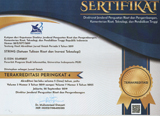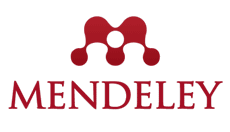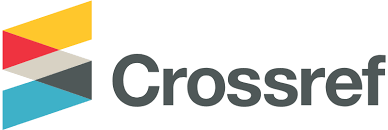K-Means Clustering Data NIK Mahasiswa Baru Menggunakan Altair Ai-Studio
(1)
(2) Universitas Indraprasta PGRI
(3) Universitas Indraprasta PGRI
(*) Corresponding Author
Abstract
In this connected digital era, the need to have a secure and trusted digital identity is becoming increasingly important. One of the major steps taken by Indonesia in achieving this is by utilizing the NIK (Population Identification Number) as a single citizen identity data. NIK is a unique number given to every Indonesian citizen since their birth. Not only that, the utilization of NIK as single data also allows the government to conduct data analysis more effectively. With centralized data, the government can make decisions and make policies that are more targeted and in accordance with the needs of the community. In this research, the author applies data mining techniques using the K-Means algorithm. The approach is used to group data based on the distance between data, which organizes data into a predetermined number of clusters. The research stages start from data preparation, data transformation, data modeling and data evaluation. The results of the K-mean algorithm testing research using Altair AI-Studio can be concluded that the distribution of new Indraprasta PGRI University students for the 2023/2024 academic year based on NIK is spread across 32 of the 37 provinces in Indonesia with the largest population from DKI Jakarta province, namely 4,630 students and West Java as many as 4,219 students who are included in the Cluster0 category.
Keywords
Full Text:
PDFReferences
M. Subur, M. Martanto, and U. Hayati, “Clustering Penduduk Miskin Untuk Penerima Bantuan Sosial Menggunakan Algoritma K-Means,” JATI (Jurnal Mhs. Tek. Inform., vol. 8, no. 1, pp. 789–795, 2024, doi: 10.36040/jati.v8i1.8809.
E. Rahayu, N. Erawati, and R. Ananda, “Klasifikasi Kelayakan Warga Penerima BPNT dengan Algoritma k-Nearest Neighbor Classification of Eligibility for BPNT Recipients using the k - Nearest Neighbor Algorithm,” Sistemasi, vol. 13, no. 1, pp. 107–113, 2024, [Online]. Available: http://sistemasi.ftik.unisi.ac.id/index.php/stmsi/article/download/3250/615
N. A. Rahmalinda and A. Jananto, “Penerapan Metode K-Means Clustering Dalam Menentukan Strategi Promosi Berdasarkan Data Penerimaan Mahasiswa Baru,” J. Tekno Kompak, vol. 16, no. 2, pp. 163–175, 2022.
V. M. Al Aqsa, D. Mahdiana, Rusdah, and D. Anubhakti, “Klasterisasi Profil Mahasiswa Baru Menggunakan Algoritme K-Means Pada Fakultas Teknologi Informasi Universitas Budi Luhur,” Semin. Nas. Mhs. Fak. Teknol. Inf., vol. 2, no. 1, pp. 309–315, 2023.
N. A. Rizki, K. Kurniawan, I. K. Hasan, and N. Sampe, “Implementasi Algoritma K-Means Untuk Mengelompokkan Mahasiswa Berdasarkan Sumber Belajarnya,” Metik J., vol. 7, no. 2, pp. 62–67, 2023, doi: 10.47002/metik.v7i2.584.
R. Mbanimara and W. Saputro, “Klasifikasi Pemetaan Penduduk Penerima Bantuan Renovasi Rumah Menggunakan Algoritma K- Means Ronaldi,” J. Pendidik. dan Konseling, vol. 4, no. 5, pp. 637–646, 2022.
N. Putri Apriliani, “Perlindungan Hukum Terhadap Korban Penyalahgunaan Data Pribadi (Studi Kasus Penyalahgunaan NIK dalam Proses Pendaftaran Bacaleg di Lampung),” UNEW LAW Rev., vol. 6, no. 2, p. hlm 6130, 2023, [Online]. Available: https://review-unes.com/https://creativecommons.org/licenses/by/4.0/
N. Noviyanto and P. Ekasari, “Algoritma K-Means Untuk Klasterisasi Jabatan Fungsional Dosen Pada Perguruan Tinggi Swasta Di Lingkungan LLDikti Wilayah III,” Paradig. - J. Komput. dan Inform., vol. 24, no. 1, pp. 103–107, 2022, doi: 10.31294/paradigma.v24i1.1112.
L. Susanti, “Klasifikasi Tingkat Stress Pada Mahasiswa Teknik Informatika Dalam Melakukan Perkuliahan Metode Hybrid Menggunakan Algoritma Naive Bayes,” STRING (Satuan Tulisan Ris. dan Inov. Teknol., vol. 8, no. 3, pp. 243–248, 2024.
M. P. A. Ariawan, I. B. A. Peling, and G. B. Subiksa, “Prediksi Nilai Akhir Matakuliah Mahasiswa Menggunakan Metode K-Means Clustering (Studi Kasus : Matakuliah Pemrograman Dasar),” J. Nas. Teknol. dan Sist. Inf., vol. 9, no. 2, pp. 122–131, 2023, doi: 10.25077/teknosi.v9i2.2023.122-131.
R. Wulan, T. T. Widaningsih, and F. Yanuar, “Clustering the K-means Algorithm with the Approach to Student Interpersonal Communication Patterns in Selecting Secondary Schools,” Fakt. Exacta, vol. 16, no. 4, pp. 332–339, 2024, doi: 10.30998/faktorexacta.v16i4.20852.
R. F. N. Alifah and A. C. Fauzan, “Implementasi Algoritma K-Means Clustering Berbasis Jarak Manhattan untuk Klasterisasi Konsentrasi Bidang Mahasiswa,” ILKOMNIKA: Journal of Computer Science and Applied Informatics, vol. 5, no. 1. pp. 31–41, 2023. doi: 10.28926/ilkomnika.v5i1.542.
D. L. Davies and D. W. Bouldin, “A Cluster Separation Measure,” IEEE Trans. Pattern Anal. Mach. Intell., vol. PAMI-1, no. 2, pp. 224–227, 1979, doi: 10.1109/TPAMI.1979.4766909.
Z. F. Zuhana Realita Alfy; Ardhi Dinullah Baihaqie; A’ini, “Analisis Cluster K-Means Pada Indikator Indeks Pembangunan Teknologi, Informasi, Dan Komunikasi,” STRING (Satuan Tulisan Ris. dan Inov. Teknol., vol. 8, no. 2, pp. 183–188, 2023.
Y. Bachtiar, “Implementasi Algoritma Greedy Untuk Optimalisasi Jarak Tempuh Rute Ziarah Makam Walisongo,” Fakt. Exacta, vol. 17, no. 3, p. 287, 2024, doi: 10.30998/faktorexacta.v17i3.23322.
DOI: http://dx.doi.org/10.30998/string.v10i1.27398
Refbacks
- There are currently no refbacks.
Copyright (c) 2025 Yogi Bachtiar

This work is licensed under a Creative Commons Attribution 4.0 International License.
STRING (Satuan Tulisan Riset dan Inovasi Teknologi) indexed by:

Ciptaan disebarluaskan di bawah Lisensi Creative Commons Atribusi 4.0 Internasional.
View My Stats


 Sertifikat Akreditasi
Sertifikat Akreditasi
















